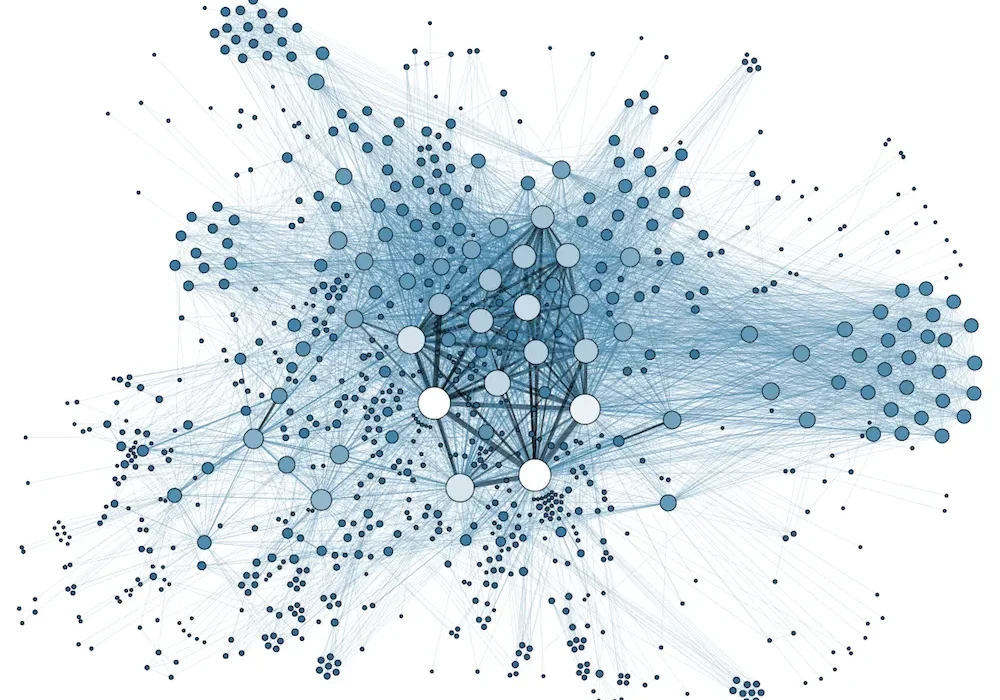Every moment of your life, even as you read these words, an invisible army is at work inside you. It moves silently, tirelessly, and with astonishing precision. This is your immune system, a vast and intricate network of cells, molecules, and organs that defends you against the countless microbes and threats that the world throws your way. Unlike walls that simply keep intruders out, the immune system is alive, adaptive, and intelligent. It remembers.
This memory is not like the recollection of a childhood moment or the sound of a loved one’s laughter. It is a cellular memory, written into the very fabric of your body’s defenses. Once your immune system meets an invader, it never forgets. That remembrance ensures that the next time the same threat tries to return, your body can strike faster, harder, and with greater efficiency. Without this memory, humanity might not have survived epidemics, pandemics, or even the daily onslaught of microbes. The immune system’s memory is one of biology’s greatest triumphs—a legacy of survival encoded in our very cells.
The First Encounter
Imagine you are exposed to a virus for the first time. Perhaps it is influenza, perhaps measles, or perhaps a virus unknown to your body. At first, the intruder slips past your external defenses—the skin, the mucus in your airways, the acidity of your stomach. Once inside, it begins to multiply, attempting to establish itself in your tissues.
Your immune system senses the invasion almost instantly. Innate immune cells, the body’s first responders, detect foreign molecules through receptors that act like alarm bells. They do not recognize specific enemies but respond broadly, creating inflammation, sending chemical signals, and attempting to slow the spread. Fever, fatigue, and swollen lymph nodes may follow as the body fights back.
But this is only the beginning. The true genius of the immune system lies in the adaptive response. Special cells—B lymphocytes and T lymphocytes—begin to mobilize. These cells are not generalists; they are specialists trained to recognize specific threats. B cells produce antibodies that lock onto unique proteins of the invader. T cells coordinate attacks, some directly killing infected cells while others orchestrate the defense.
This first encounter is often the hardest. The immune system has never seen the pathogen before, and it takes days to identify the invader, design the right antibodies, and expand the right cells into a full army. You may feel ill during this period, but while your body struggles, it is also creating something extraordinary: memory.
Writing Memory into Cells
The battle ends, and your body recovers. But the immune system does not return to its original state. It has changed. Some of the B and T cells that fought the infection transform into memory cells. Unlike their short-lived counterparts that vanish after the battle, these memory cells endure, sometimes for decades or even a lifetime.
Memory B cells remember the precise molecular shape of the enemy. If the pathogen reappears, they can quickly produce antibodies, often preventing illness before symptoms even arise. Memory T cells likewise remain vigilant, ready to eliminate infected cells or rally other defenses with breathtaking speed.
This transformation is astonishing. Out of billions of possible invaders, the immune system imprints the memory of specific foes into a living archive. Each infection, each vaccine, and each microbial challenge adds new entries to this archive. It is a biological diary written not in words, but in molecules and cells.
Vaccination: Harnessing Memory Without Illness
Human ingenuity discovered a way to partner with this natural memory. Vaccination is the deliberate training of the immune system using harmless versions of a pathogen—killed microbes, weakened forms, or fragments that mimic the real thing. When vaccinated, your immune system believes it has met the enemy. It creates memory without the risk of severe disease.
The story of vaccines is one of the most powerful examples of harnessing immune memory. Smallpox, once a deadly scourge that killed millions, was eradicated through global vaccination efforts. Polio, measles, diphtheria, and countless other diseases that once ravaged humanity have been reduced or controlled thanks to the immune system’s ability to remember.
Every vaccine is a rehearsal. The immune system practices against a harmless mimic, so that when the true threat arrives, it responds with mastery. The success of this approach rests entirely on the immune system’s memory—a natural gift that science learned to awaken deliberately.
The Layers of Memory
Immune memory is not one-dimensional; it operates on several levels, each offering unique protection. Some memory cells remain in circulation, patrolling the blood and lymphatic system. Others, known as tissue-resident memory cells, embed themselves in specific organs, waiting exactly where the pathogen once struck. These guardians are like sentinels stationed at the gates, providing rapid, localized defense.
In addition, memory cells are not static. They continue to evolve. B cells undergo a process called affinity maturation, in which their antibodies become more precise, binding more tightly to their target. This means that upon re-exposure, not only does the immune system respond faster, but it responds better. The second encounter is not merely a repeat performance; it is an improved one.
The Cost of Forgetting
Yet, immune memory is not always perfect. Some pathogens mutate so rapidly that the immune system’s memory becomes outdated. Influenza is a prime example. Each year, its surface proteins shift, creating new strains that escape recognition. This is why flu vaccines must be updated annually, a race between viral evolution and human defense.
Other pathogens, like HIV, are even more elusive. They hide within cells, mutate relentlessly, and evade detection, making it nearly impossible for the immune system to develop lasting memory. These challenges remind us that while the immune system’s memory is powerful, it is not infallible.
Age, too, can erode immune memory. As we grow older, the immune system weakens, and the reservoirs of memory cells decline. This is one reason why older adults are more vulnerable to infections and benefit less from vaccines. The fading of immune memory is a reminder of our biological mortality, a gradual dimming of the inner light that once burned fiercely against disease.
When Memory Turns Against Us
There are times when immune memory becomes a double-edged sword. In autoimmune diseases, the immune system mistakes the body’s own tissues for enemies. Once that misidentification occurs, memory cells lock onto it, perpetuating chronic attacks that harm rather than protect. Conditions like multiple sclerosis, rheumatoid arthritis, and type 1 diabetes are examples of the immune system’s memory gone awry.
Allergies, too, are a form of misplaced memory. The immune system records harmless substances—pollen, peanuts, dust mites—as if they were threats. Each exposure triggers a reaction that is not protective but destructive, sometimes even life-threatening. The same machinery that protects us can, in rare cases, betray us.
The Memory of Epidemics
The immune system’s memory is not only personal but collective. Entire populations carry the scars of past epidemics in their immunological memories. When a community is repeatedly exposed to a pathogen, herd immunity can arise. Enough individuals retain memory that outbreaks struggle to spread. But when a new pathogen arrives—something humanity has never seen before—the result can be devastating.
The COVID-19 pandemic was a striking reminder of this. At the beginning, the virus was novel, meaning no immune system had a memory of it. The world was vulnerable. As infections spread, individuals developed memory, and vaccines were designed to safely trigger that same process. Today, humanity carries a growing collective memory of SARS-CoV-2, though the virus’s ability to mutate continues to test that defense.
A Dance Across Generations
Immune memory is so precious that nature found ways to pass it between generations. Mothers transfer antibodies to their babies during pregnancy through the placenta and later through breast milk. These borrowed defenses provide newborns with temporary protection in the vulnerable early months of life. Though this memory is not permanent, it offers a bridge of safety until the infant’s own immune system begins writing its own archive.
This generational sharing is a reminder that immunity is not only an individual experience but also a collective inheritance. The body’s memory of past battles becomes part of a lineage of protection, a chain of survival that links parents and children across time.
The Poetry of Immunity
There is a quiet poetry in the way the immune system remembers. Unlike the mind, which can forget names, places, and faces, the immune system clings to its lessons with unwavering dedication. It is loyal to the body it serves, holding onto the knowledge of every battle fought. It transforms suffering into wisdom, turning past illness into future protection.
Every scar, every fever, every recovery leaves an imprint not just in your story but in your cells. Your immune system is the historian of your body, chronicling encounters with the microscopic world, archiving victories, and preparing for future wars. In its memory lies your survival.
Toward the Future of Immune Memory
The study of immune memory continues to shape the future of medicine. Scientists are exploring ways to design vaccines that produce longer-lasting memory, even against rapidly mutating viruses. Research into cancer immunotherapy seeks to train the immune system to remember tumors as enemies, creating living treatments that adapt and endure.
Advances in biotechnology may one day allow us to enhance, restore, or even engineer immune memory. For people with weakened immunity, this could mean new hope. For diseases that have long evaded our defenses, it could mean breakthroughs once thought impossible.
The immune system’s memory is not only a biological marvel but a frontier of human possibility. To understand it is to glimpse a future where disease may be less feared, where health is more resilient, and where the wisdom of our cells can be harnessed with unprecedented precision.
The Unseen Chronicle of Your Life
As you walk through the world—touching, breathing, living—your immune system is keeping its journal. Every microbe you encounter is either repelled, tolerated, or remembered. This journal is invisible, written in the code of cells and molecules, yet it shapes the course of your life more than any diary ever could.
You may forget the colds you had as a child, but your body has not. You may not recall the sting of every vaccination, but your cells remember. You may be unaware of the microbes you never fell ill from because your immune system recognized and neutralized them silently, without asking for your attention.
This is the story of your survival. It is written not in the mind but in the marrow, the lymph nodes, and the circulating currents of your blood. Your immune system never stops remembering, never stops protecting, never stops carrying the wisdom of past battles into the future.
The Legacy of Never Forgetting
The immune system’s memory is one of nature’s greatest gifts. It allows individuals to endure illnesses and recover stronger. It allows communities to withstand epidemics and survive. It allows humanity to thrive in a world teeming with unseen dangers.
To understand this memory is to appreciate a profound truth: survival is not accidental. It is crafted, sustained, and recorded in the hidden archives of our biology. Each of us carries within us not only the memories of our lives but the memories of our cells, an eternal companion that ensures we do not fight the same battle twice unprepared.
Your immune system is more than an army; it is a storyteller. And its story is one of resilience, vigilance, and the miracle of never forgetting.






